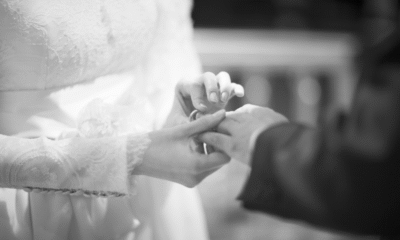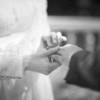There were moments in my therapy journey when I wondered if anything would ever change. I kept attending sessions, answering questions, and trying to apply every coping strategy I was given. But deep down, I still felt distant from myself like I was just surviving instead of truly living. I didn’t feel broken, but I didn’t feel whole either.
Then something shifted. It wasn’t a new method or a major breakthrough. It was something simple, but powerful. This one unexpected shift in therapy helped me feel human again not fixed, not perfect, just real, present, and finally, like myself.
Start With the Problem (Emotional Hook)
I was showing up to therapy, but something still felt off. I kept talking about my problems, but I wasn’t feeling better. Every week, I’d sit, explain what I thought was wrong, get advice, and leave feeling just as empty. I didn’t feel broken I felt disconnected.

Like I was outside myself, trying to act like a person instead of being one. It was like I was living on autopilot. I wanted change, but I didn’t know what kind. Nothing dramatic happened, but I remember thinking, When will I feel like me again? That was the real problem.
- Briefly describe the emotional state before therapy felt helpful numbness, disconnection, burnout, or feeling like just going through the motions.
- Keep this short, but vivid and relatable, use the first-person style.
- Example: I was in therapy, but I still felt like a shell. I was doing everything ‘right,’ but nothing clicked. I didn’t feel like myself or anyone, really.
Read: Harvard Marriage Experts Reveal What Most Couples Get Wrong And How to Fix It
Introduce the Unexpected Shift (Key Idea)
What changed everything wasn’t a new therapy method or a different therapist. It was one unexpected shift: I stopped trying to fix myself and started simply noticing myself. Instead of constantly scanning for problems, I began paying attention to what I felt in the moment without trying to explain, judge, or change it.
My therapist didn’t give me a new technique. She just helped me focus on what was real, not what was wrong. That shift from fixing to noticing was the first time therapy helped me feel human again. It was simple, but it changed everything.
- State the one shift clearly, in simple language.
- Example: The shift? I stopped focusing on fixing what’s wrong. I started focusing on noticing what’s real and right in the present moment without judgment.
- Explain that the change wasn’t a new technique, but a new mindset.
What This Looked Like in Practice (How-To Breakdown)
During sessions, my therapist started asking me what I felt in my body before asking what I thought. If I said I feel anxious, she asked, Where do you feel that? Instead of analysing, I started sensing. When emotions came up, I wasn’t asked to explain them I was asked to stay with them.

At first, it felt strange. But soon, I realised this made me feel more real. More present. Less like I was acting out therapy, and more like I was just being there. It wasn’t about fixing pain it was about staying with it.
- I started checking in with how I felt physically not just mentally.
- My therapist asked me what felt true in the moment, instead of what felt broken.
- I was encouraged to allow feelings, not just explain or fix them.
- I stopped trying to perform progress and started showing up as I was.
Read: They Tried Couples Therapy Before Their First Big Fight Here’s What Changed Forever
Why This Helped Me Feel Human Again (Direct Benefits)
That one shift gave me something I hadn’t felt in years the sense that I was allowed to exist just as I was. I stopped thinking of myself as a problem to solve. I started feeling like a person again. I felt emotions more clearly, but I also felt less overwhelmed by them.
I wasn’t fighting myself anymore. I was learning to listen, and that gave me peace. It reminded me that healing doesn’t mean changing everything. Sometimes it means being with what’s already true. That’s what helped me reconnect with myself not fixing, but being.
Explain how this shift helped you:
- Feel grounded in your body and experiences.
- Stop fighting your emotions.
- Feel warmth, agency, and dignity again.
- Keep this practical and emotional. Use plain language.
- Example: For the first time, I felt seen by myself. I didn’t need to be better. I just needed to be real.
How You Can Try This Shift Today (Actionable Tip)
Here’s one simple thing you can try today: Take one quiet minute, place your hand on your chest or stomach, and notice three things you feel physically not emotionally. Don’t label them good or bad. Just notice them. Maybe your shoulders feel tight, or your breath is shallow. That’s enough.

You don’t need to do anything about it. Just pay attention. That’s the shift you’re not fixing, you’re noticing. Try this once a day. It helps you come back to yourself in a real, physical way. Over time, this builds trust with your own experience. That’s where healing starts.
Examples:
- Sit for 30 seconds and notice 3 sensations in your body without judging them.
- Instead of asking Why do I feel like this? Ask What is my body trying to say?
- When you feel overwhelmed, say out loud: I’m noticing this. I don’t have to fix it right now.
Read: Not All Couples Therapy Is Equal: What We Learned Searching Locally
This article shares a personal and practical insight about how one unexpected shift in therapy brought lasting emotional relief. Instead of focusing on fixing problems, the shift involved simply noticing and accepting present experiences without judgment.
This small change created a deeper connection to self, reduced emotional pressure, and made therapy feel more real and effective. The piece offers a clear, easy-to-apply takeaway for readers who want to feel more human and grounded in their healing journey.




















